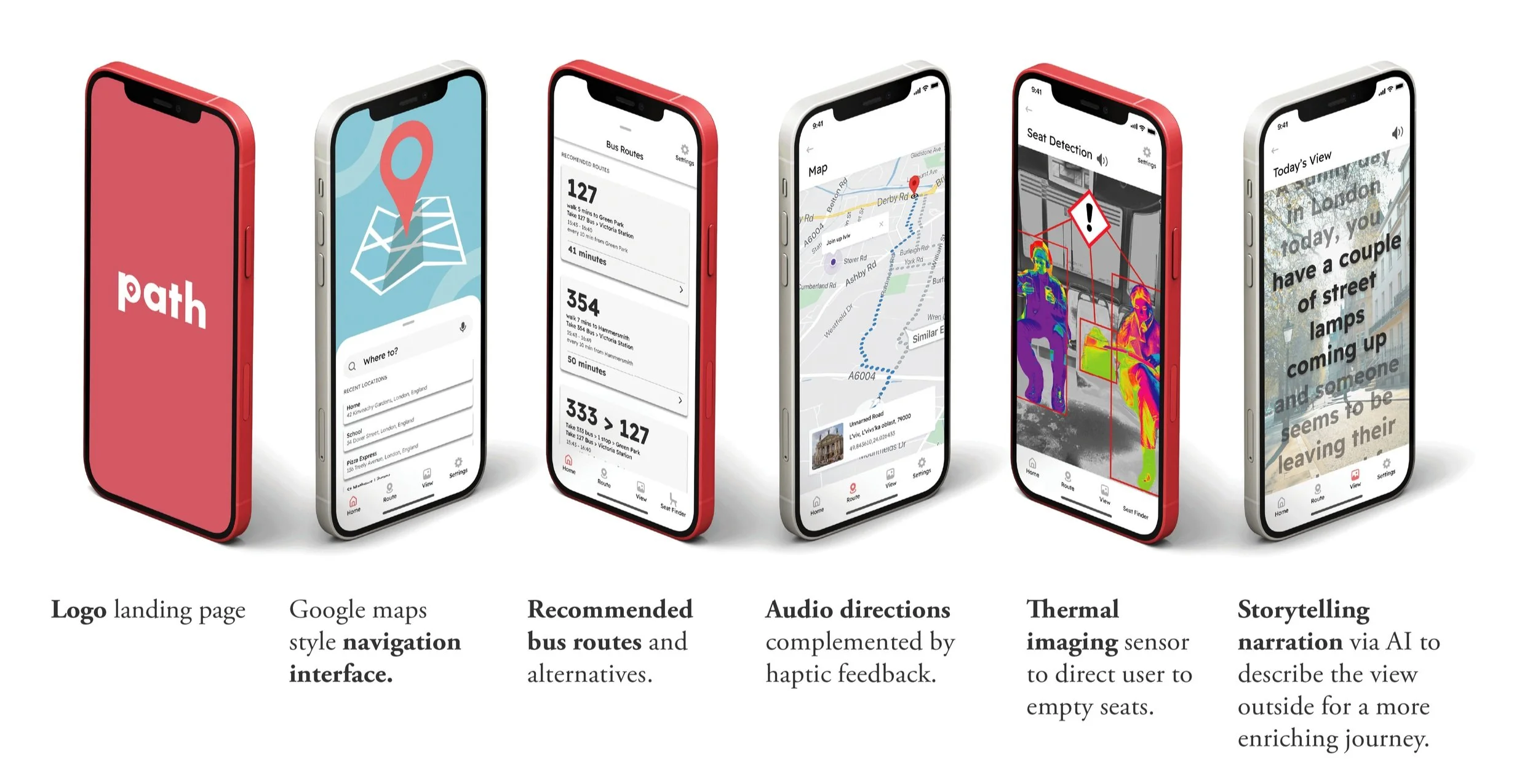Path
A group project for the RSA Student Design Awards 2022:
A travel aid to empower visually impaired users to travel independently and confidently on public buses.
The problem
Frustration
〰️
Hassle
〰️
Uncertainty
〰️
Confidence
〰️
Time consuming
〰️
Anxiety
〰️
Independence
〰️
Frustration 〰️ Hassle 〰️ Uncertainty 〰️ Confidence 〰️ Time consuming 〰️ Anxiety 〰️ Independence 〰️
Noah
“You never really know what seats are free and where people are sitting... You don’t really know where a free seat is without kind of just guessing.”
Bri
“Bus drivers were really bad at remembering to tell me when I’d got to my stop. It was frustrating ending up miles away from my stop.”
Abby
“Going out with a friend hampers my independence, but I can’t go by myself because I probably I wouldn’t know the way back home.”
“Being on the bus alone, I wouldn’t know what to do next.”
90%
of visually impaired (VI) people cannot see a bus number in time to flag it down. (RNIB.,2014)
83%
more time taken by VI users to find a seat on a crowded bus (Bareria et al, 2012)
54%
of VI people reported they had missed their stop.
UX features
Product features
Experience prototyping
1. Route planning
With the assistance of screen readers, our app includes route planning and recommendations, allowing you to choose paths most familiar or comfortable for you.
2. Bus arriving
Near Face Communication and haptic vibrations notify you that your bus is approaching.
3. Finding a seat
Remove stress by utilizing thermal imaging and image recognition software to highlight obstacles and occupied seats.
4. Enjoy the journey
Get story-like narration of the views outside for a richer, more enjoyable experience. AI technology means you can explore your environment and mentally map your surroundings.
5. Destination
Be notified via haptic feedback when your stop is approaching, and when to alight the bus.















